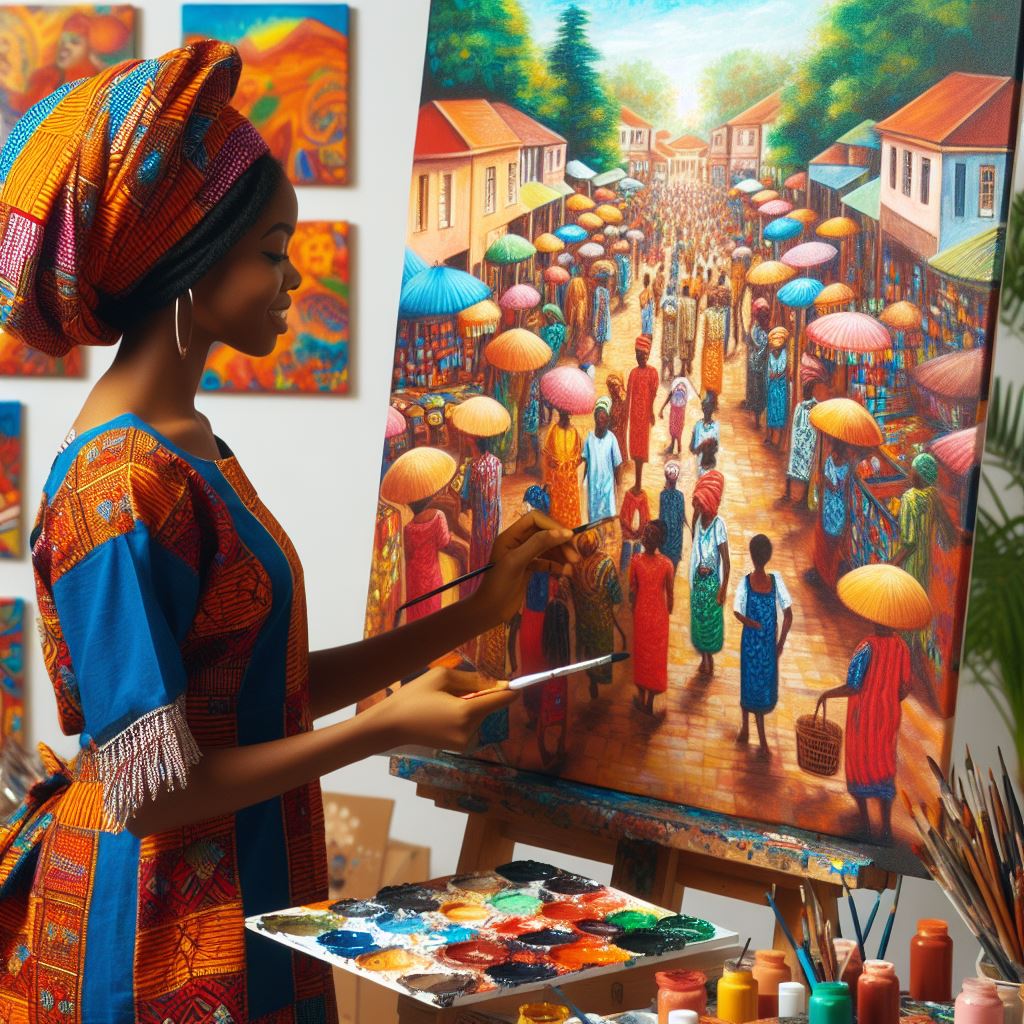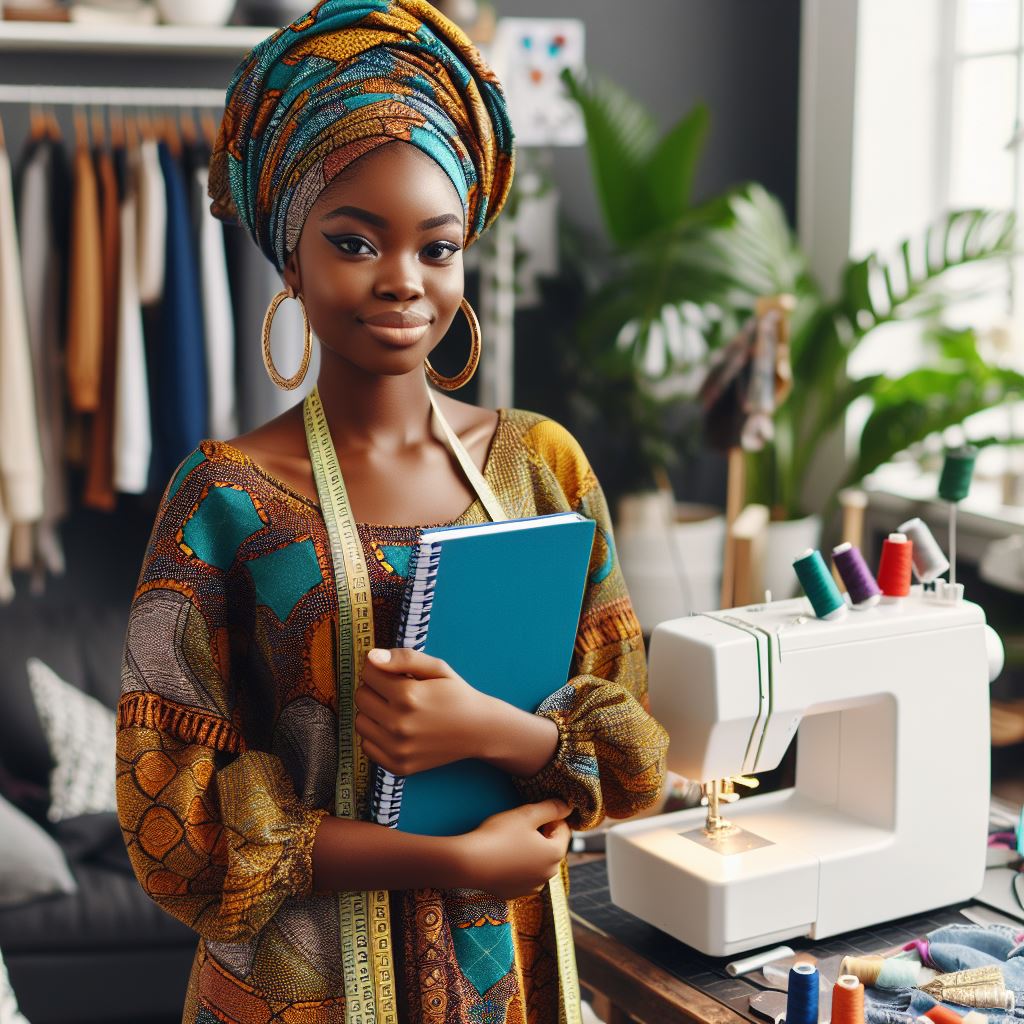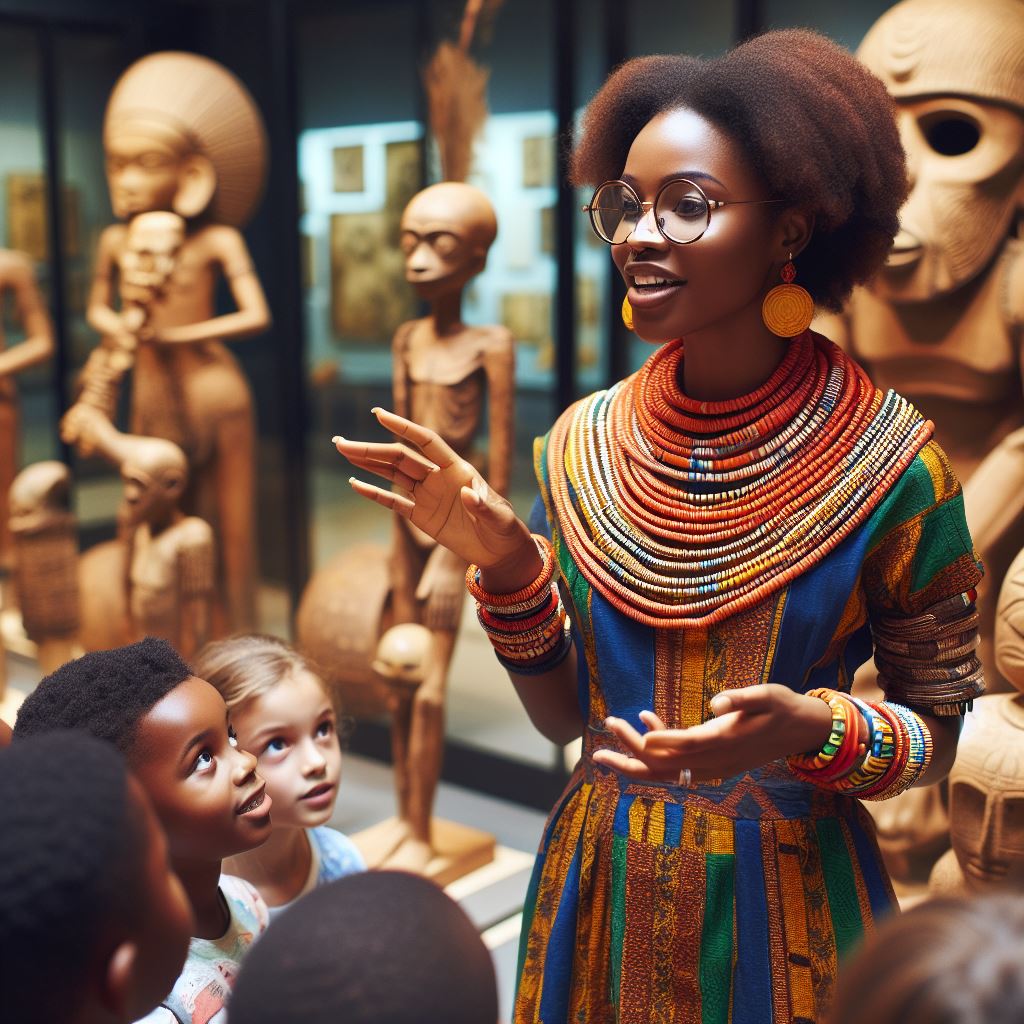Introduction
Nigerian art holds immense cultural and historical value, reflecting the nation’s rich heritage and diverse traditions. The need to preserve and restore this art is paramount, ensuring future generations can appreciate and learn from it.
Nigerian art, ranging from traditional sculptures to contemporary paintings, showcases the country’s unique cultural identity and artistic prowess. Preserving these artworks is crucial for maintaining the cultural continuity and historical narrative of Nigeria.
The Importance of Preservation
Preservation protects art from deterioration, damage, and loss over time.
It safeguards cultural heritage, allowing future generations to connect with their history.
Preserving art supports educational initiatives, providing valuable resources for learning and research.
Restoration Efforts
Restoration repairs damaged or aged artworks, bringing them back to their original glory.
It involves using modern techniques and materials to ensure the longevity of the art.
Restoration efforts often require collaboration between experts, artists, and cultural institutions.
Significance of Nigerian Art
Nigerian art showcases the country’s rich cultural diversity and artistic traditions.
It provides insights into historical events, societal changes, and traditional practices.
Art serves as a medium for storytelling, preserving myths, legends, and historical narratives.
Nigerian art contributes to the global cultural landscape, highlighting the country’s creative contributions.
Preserving and restoring Nigerian art is vital for maintaining cultural heritage and historical continuity. By protecting and revitalizing these artworks, we ensure that the rich cultural identity and artistic achievements of Nigeria continue to inspire and educate future generations.
Understanding Nigerian Art
- Traditional Sculptures: These pieces are often made from wood, bronze, or terracotta and represent religious or cultural themes.
- Paintings: Nigerian artists use a variety of mediums such as oil, acrylic, and watercolor to create vibrant and expressive works.
- Textiles: Nigerian art includes elaborate fabrics, weaving, and embroidery techniques that showcase the country’s rich textile heritage.
- Beadwork: Intricate beadwork is a significant aspect of Nigerian art, with artisans creating jewelry, ceremonial regalia, and decorative objects.
Cultural Influences
Nigerian art is heavily influenced by the diverse cultural traditions of its many ethnic groups. These influences can be seen in the themes, symbols, and techniques used by Nigerian artists across different mediums.
Some of the key cultural influences that shape Nigerian art include
- Yoruba Art: The Yoruba people have a rich artistic tradition that includes elaborate sculptures, textiles, and beadwork.
- Igbo Art: Igbo art is known for its intricate masks, carvings, and pottery that reflect the community’s spiritual beliefs.
- Hausa Art: The Hausa people are renowned for their decorative embroidery, leatherwork, and metal craftsmanship.
- Benin Art: The Benin Kingdom has a long history of bronze casting, ivory carving, and royal regalia that showcase the kingdom’s power and prestige.
By understanding the different forms of Nigerian art and the cultural influences that shape them, we can appreciate the richness and diversity of the country’s artistic heritage. This knowledge is essential for preserving and restoring Nigerian art for future generations to enjoy.
Read: Language Arts Courses: What to Expect in Nigeria
Challenges in Preserving Nigerian Art
Neglect and Deterioration
Nigerian art faces significant neglect, leading to its gradual deterioration. Many art pieces lack proper maintenance. This neglect results in the fading of colors, erosion of materials, and loss of structural integrity.
Museums and galleries often struggle with inadequate preservation techniques. Traditional art forms, such as wood carvings and textiles, require specialized care. Without it, these art pieces succumb to environmental factors like humidity and pests.
Theft and Trafficking
Theft poses a severe threat to Nigerian art. Many valuable pieces have been stolen from museums, private collections, and heritage sites. Traffickers exploit weak security measures to smuggle art out of the country.
These stolen artworks often end up in illegal markets, depriving Nigeria of its cultural heritage. The loss of these art pieces also impacts cultural tourism, which could benefit local economies.
Socio-Economic Factors
Poverty and unemployment drive some individuals to engage in the illegal art trade. Economic hardship makes it difficult for communities to prioritize art preservation.
People struggling to meet basic needs may not see the value in preserving art. Consequently, art pieces are neglected, sold, or destroyed for survival.
Lack of Funding
Insufficient funding hampers efforts to preserve Nigerian art. Museums and cultural institutions often operate on limited budgets. This financial constraint limits their ability to implement advanced preservation techniques.
Art restoration projects are costly and require skilled professionals. Without adequate funding, these projects remain incomplete, leaving art vulnerable to further degradation.
Consequences of Degradation
The degradation of Nigerian art leads to the loss of cultural identity. Art pieces carry historical and cultural narratives that are vital for future generations. When these pieces deteriorate or vanish, their stories are lost forever.
This loss diminishes the cultural richness and diversity of Nigeria.
Addressing the Challenges
To combat these challenges, Nigeria needs comprehensive strategies. Increased funding for museums and cultural institutions is essential. Government and private sector partnerships can provide the necessary financial support.
Public awareness campaigns can educate communities on the importance of preserving art. Training programs for conservation professionals can improve preservation techniques.
Promoting Cultural Value
Promoting the cultural value of art can foster community involvement. When people recognize the significance of their cultural heritage, they are more likely to engage in preservation efforts. Schools can incorporate art education into their curricula to instill appreciation from a young age.
Preserving Nigerian art requires addressing various threats, including neglect, deterioration, theft, and trafficking. Socio-economic factors and lack of funding exacerbate these issues.
Comprehensive strategies involving increased funding, public awareness, and community involvement are crucial. By addressing these challenges, Nigeria can safeguard its cultural heritage for future generations.
Read: Internship Opportunities for Communication Arts Students
Strategies for Preservation
Practical steps to preserve Nigerian art, such as proper storage
Preserving Nigerian art is crucial to maintaining the cultural heritage of the nation. Here are some practical steps that can be taken to ensure the longevity of these artworks:
Proper Storage
Artworks should be stored in a controlled environment with stable temperature and humidity levels to prevent deterioration.
Regular Maintenance
To safeguard Nigerian art for generations, art institutions, government agencies, and local communities must collaborate on preservation strategies.
Documentation
Creating detailed records of each artwork, including photos, descriptions, and historical information, helps in tracking the provenance and condition over time.
Importance of Collaboration
Collaboration between various stakeholders is key to safeguarding Nigerian art for future generations. Here are some ways in which collaboration can be fostered:
Art Institutions
Art institutions play a crucial role in preserving and showcasing Nigerian art. By collaborating with these organizations, valuable resources and expertise can be utilized for preservation efforts.
Government Agencies
Government agencies can provide funding, support, and legislation to protect and promote Nigerian art. Collaboration with these bodies can strengthen preservation initiatives and ensure sustainable practices.
Local Communities
Engaging local communities in the preservation of Nigerian art fosters a sense of ownership and pride in cultural heritage. Collaborating with community members can help raise awareness and involvement in conservation efforts.
In review, a multi-faceted approach involving proper preservation strategies and collaboration among art institutions, government agencies, and local communities is essential to safeguarding Nigerian art for generations to come.
Read: Impact of Communication Arts on Nigerian Media

Techniques for Restoration
When it comes to preserving and restoring Nigerian art, there are various techniques that can be employed to ensure that damaged or deteriorated pieces are brought back to their original state. Below are some methodologies commonly used in the restoration process:
- Cleaning: One of the initial steps in the restoration process is cleaning the art piece. This involves removing dirt, grime, and any other surface contaminants that may have accumulated over time. Professional conservators use specialized tools and techniques to gently clean the artwork without causing any damage.
- Repair: Once the art piece has been cleaned, the next step is to address any visible damage or deterioration. This can include fixing cracks, tears, or missing pieces. Conservators may use materials that are as close to the original as possible to ensure a seamless repair that does not compromise the integrity of the artwork.
- Conservation: Conservation plays a crucial role in the restoration process by preventing further deterioration of the art piece. This involves creating a stable environment for the artwork, protecting it from factors such as light, humidity, and temperature fluctuations. Conservation efforts aim to prolong the lifespan of the artwork and maintain its original condition for as long as possible.
Role of Professional Conservators and Experts
Professional conservators and experts are instrumental in the restoration of Nigerian art.
Their expertise, knowledge, and experience play a significant role in ensuring that the artwork is treated with the utmost care and respect. Here are some key tasks that conservators and experts undertake in the restoration process:
- Assessment: Conservators and experts begin by conducting a thorough assessment of the artwork to identify areas of damage or deterioration. This helps them develop a restoration plan that addresses the specific needs of the art piece.
- Research: Before embarking on the restoration process, conservators and experts conduct extensive research to understand the materials used in the artwork, its cultural significance, and the artist’s techniques. This information is crucial in making informed decisions during the restoration process.
- Treatment: Once the assessment and research phases are complete, conservators and experts proceed with the treatment of the artwork. This involves implementing various techniques, such as cleaning, repair, and conservation, to restore the art piece to its original state while preserving its authenticity and historical value.
Restoring Nigerian art requires balancing artistry, science, and expertise. We must combine these elements carefully to achieve success.
By employing the right techniques and working closely with professional conservators and experts, damaged or deteriorated art pieces can be successfully restored to their former glory, ensuring that Nigeria’s rich cultural heritage is preserved for future generations to appreciate and admire.
Read: Communication Arts: Job Prospects and Salaries
Cultural Awareness and Education
Proper Maintenance Techniques
Use climate-controlled environments to prevent deterioration of delicate artworks.
Regularly clean and inspect art pieces to detect and address early signs of damage.
Store artworks in protective coverings to shield them from dust, light, and pests.
Combating Theft and Trafficking
Implement robust security measures in museums and galleries to deter theft.
Establish a comprehensive database of Nigerian art to track and recover stolen pieces.
Collaborate with international agencies to prevent illegal trafficking of art.
Securing Funding and Resources
Seek government and private sector funding for art preservation projects.
Apply for grants and international aid dedicated to cultural heritage preservation.
Encourage community involvement and donations to support local art initiatives.
Promoting Awareness and Education
Educate the public on the importance of preserving Nigerian art through campaigns and workshops.
Incorporate art conservation education into school curricula to foster early appreciation.
Engage communities in preservation efforts to instill a sense of cultural pride and responsibility.
Conclusion
Preserving and restoring Nigerian art requires a multifaceted approach. Key strategies include addressing neglect, combating theft and trafficking, and mitigating socio-economic factors. We must secure adequate funding to support preservation efforts.
Neglect leads to the deterioration of valuable art pieces. Proper maintenance and care are crucial to prevent this. Theft and trafficking pose serious threats to Nigerian art.
Strengthening security measures can help protect these cultural treasures. Economic hardship exacerbates these challenges. Addressing poverty and unemployment can reduce the temptation to engage in illegal art trade.
Funding is essential for effective preservation and restoration. Government and private sector partnerships can provide the necessary resources.
Public awareness campaigns can educate communities on the importance of preserving art. Schools should incorporate art education to instill appreciation from a young age.
Transform Your Career with Expert Guidance
Get personalized mentorship consulting that’s tailored to your unique path. Our expert advice is actionable and exclusive.
Get StartedTo recap, the main points include
- Addressing neglect through proper maintenance.
- Combating theft and trafficking with stronger security measures.
- Mitigating socio-economic factors by addressing poverty and unemployment.
- Securing funding through government and private sector partnerships.
- Promoting public awareness and art education.
We must all take an active role in safeguarding Nigerian art. Support local museums and cultural institutions. Participate in awareness campaigns and advocate for better funding. Educate the younger generation about the importance of their cultural heritage.
By working together, we can preserve and restore Nigerian art for future generations. Protecting our cultural heritage ensures that its rich history and beauty endure. Let’s take action now to safeguard our priceless art.





Excellent and educative.
PLEASE CAN YOU INTRODUCE SOMEONE TO CLEAN UP & VARNISH MY PAINTINGS ?
Thanks.
I will ask around and revert back.